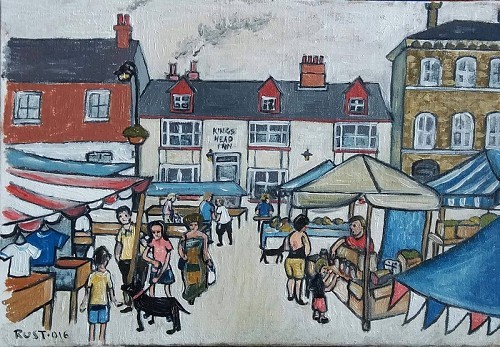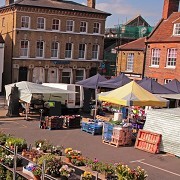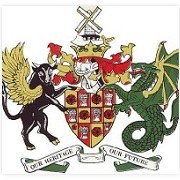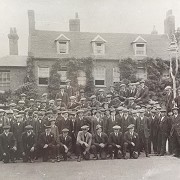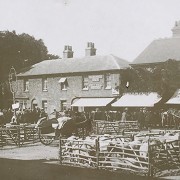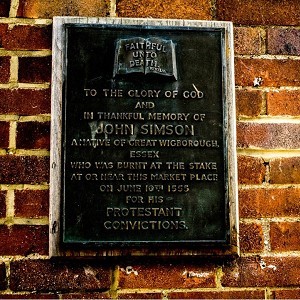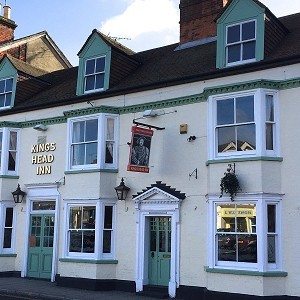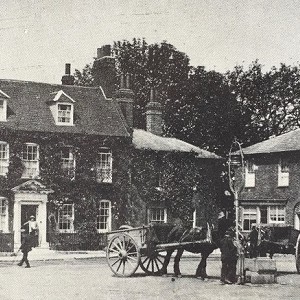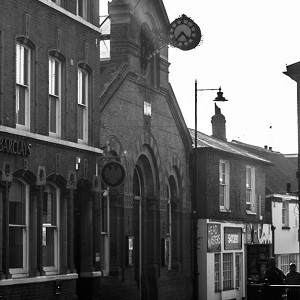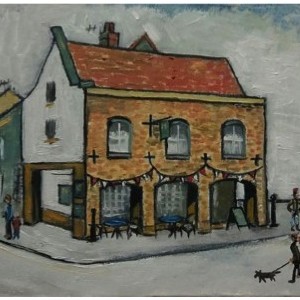About Market Square (HT)
Press this YouTube link or read below.
At the heart of old Rochford lies the medieval Market Square. Sir Guy de Rochford obtained permission from Henry III for the market in 1247, where the square played host to a historic weekly cattle and livestock sale every Tuesday, Thursday and at Whitsun. Being the only one for 20 miles around, the market was hugely popular, bringing in folk from the surrounding towns and villages as well as further afield. The atmosphere was alive with the commotion of trade, a wild cacophony of animals grunting and bleating as children poked them, while musicians and acrobats busked for their keep. The many taverns were crowded with merchants and locals revelling in the weekly spectacle.
Anything of importance happened right here in the square. If you stand a while you may be able to imagine it bustling as the public engaged excitedly in local public announcements, general socialising, fairs and a circus. There were a couple of recorded fires here that scorched their way through the architecture; the accidental Great Fire of 1884, caused wide-scale damage to the old wooden buildings on the north side of the square, then the second, a bonfire lit in 1900 to celebrate the relief of Mafeking, got seriously out of hand and panic ensued once barrels of tar were added to help the blaze along! Bystanders had to quickly take action to prevent serious damage to buildings as the molten tar ran down West Street. Then there was the public burning of a man too, as the 1500’s witnessed the execution of a religious martyr in the square.
An ancient wooden market house built in 1707, stood centrally in the square housing livestock and a barber shop; during the 18th century it was also home to the town fire engine. Wool was weighed upstairs. The house was demolished in 1861, having been ravaged by time.
Present-day Market Square is a quiet comparison. The livestock market finally closed for good in 1959. Market day continues its tradition every Tuesday, offering locals a small range of stalls. It’s still set in the square, surrounded by an eclectic mix of buildings.
The old village pump, installed in 1820, was removed in 1902; today you see an authentic reproduction made and donated by Adrian Chapman. It sits next to the original horse trough where folk would once have queued, chatting and laughing while they waited their turn to draw water for their homes and livestock. In later years, villagers were charged one farthing a pailful. Documented at a depth of 370 ft., the condemned, original artesian well still remains silently beneath the tarmac in the square, one of many wells in the area.
In the late 1960’s, the rickety cottages on the east side, where you once purchased your coach ticket to London, were torn down, making way for the first supermarket. Today the east side with its 1960’s architecture is unmistakable!
The buildings of the north side have changed over time. In July 1884, the Great Fire started in an oil store and destroyed the majority of the row. It was the arrival of the army with a large quantity of hose that enabled the fire to be brought under control.
The 1970’s saw outcry as the owner of the saddler’s shop decided to demolish it. Being a Sunday, the council couldn’t halt the demolition. Today’s buildings accommodate the butcher, the post office and a jeweller amongst the divided collection of shops and offices.
The west side is now dominated by the red brick Georgian Connaught House (34 West Street) and is adjoined by an aesthetically pleasing Georgian style, new build that replaced the ancient cottage named ‘Fernbank’.
The south side retains the buildings of greatest interest. Here you will find a large Victorian building dating from 1853, which previously housed a bank, and the W.I. Hall, built in 1866. Alongside is the historic King’s Head Inn whose origin predates 1700 but finally ceased trading in 2017, as well as a huddle of old-world cottage-style shops.
| Address: | West Street |
| Town: | Rochford |
| Postcode: | SS4 1AL |
| Categories: | Historical, Point of Interest, Rochford |
Market Square (HT) is included in the following trails:
Main Heritage TrailCentre Heritage TrailInner Heritage TrailOuter Heritage Trail7 Centuries of ArchitectureCoaching Inns & Historic Watering HolesMurder, Mystery & Mischief!
